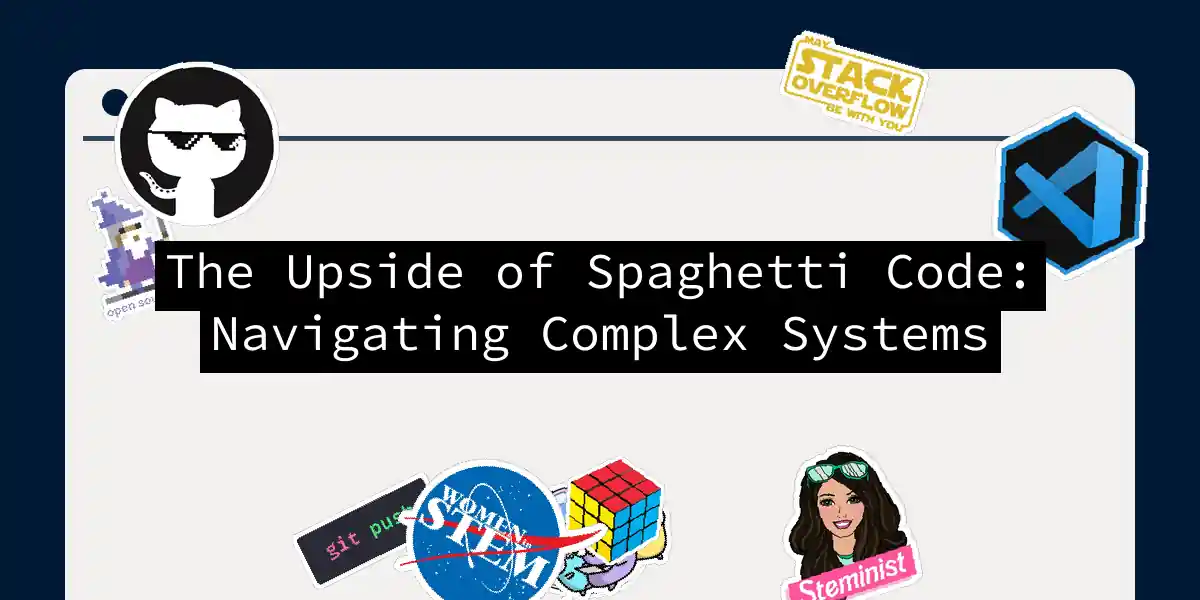Let me tell you a secret: some of the most delicious software innovations were born in a pasta bowl of tangled logic. While we’ve been busy shame-spiraling about “clean code,” generations of systems have been quietly thriving in their beautiful chaos - like that one friend who claims their desk is “organized chaos” but somehow always finds your car keys faster than you do.
When Noodles Become Infrastructure
Ever tried to reverse-engineer a 20-year-old insurance claims system written in RPG? It’s like playing Jenga with cooked spaghetti - terrifyingly fragile yet astonishingly resilient. These systems often embody what I call “survivalist coding”:
C* This line has outlived 3 CEOs and 2 programming languages
C MOVEL(P)CLAIM_ID WORK_KEY
C Z-ADD@MONTHLY_BONUS BASE_PAY 60
C* Don't touch this - Susan from accounting (1997)
These “noodle nests” persist because they work - they’ve absorbed decades of business rules like carbon dating layers in archaeological strata. As notes, even modern OS kernels contain spaghetti elements while remaining fundamental to our digital lives.
The Chaos Dividend: 3 Surprising Benefits
1. Anti-Piracy Forcefield
Complex legacy systems are the ultimate “if I go down, I’m taking you with me” strategy. Like that time I tried to fix my uncle’s classic car, there’s no Rosetta Stone for systems where GOTO statements outnumber comments 10:1. As observed in , this inherent opacity makes reverse-engineering painful enough to deter casual intruders.
2. Organic Documentation
Spaghetti systems often contain better tribal knowledge capture than any Confluence page:
// WARNING: Changing this will break Christmas
// (ask Bob about 2018 holiday payroll incident)
function calculateOvertime() {
// Easter egg: Type 'sesame' in terminal for free coffee
}
3. Innovation Pressure Cooker
Nothing inspires creative problem-solving like being neck-deep in nested loops. Modern tools like ARCAD Transformer Microservices emerged specifically to help us:
Taming the Pasta Monster: A Chef’s Guide
Step 1: Map the Sauce
Use code visualization tools to create “pasta maps”:
# Generate call graph (works with RPG, COBOL, etc.)
arcad analyze --format=3d-spaghetti legacy_app.rpgle
Step 2: Identify Meatballs
Look for logical clusters using AI-assisted analysis:
- Business rule patterns
- Data access hotspots
- Secret admin menus (we all have them)
Step 3: Strategic Refactoring
Use the “Loose Meatball” approach:
Step 4: Build Pasta Guards
Implement safety nets before making changes:
# Chaos monkey for legacy systems
def production_safe(func):
def wrapper():
try:
return func()
except SystemCollapse:
play_rick_astley()
reboot_1998_winnt_server()
return wrapper
The Philosophy of Entanglement
After helping migrate a 40-year-old manufacturing system last spring, I realized: spaghetti code is software’s punk phase. It’s raw, rebellious, and occasionally brilliant in its refusal to play by the rules. As astutely observes, this “technical debt” often represents institutional memory we can’t afford to lose. The real art lies in knowing when to:
- Let the noodles simmer (critical legacy systems)
- Add fresh herbs (strategic wrappers)
- Start new pasta water (greenfield projects) Next time you face a tangled codebase, remember: even Jackson Pollock made masterpieces from controlled chaos. Now if you’ll excuse me, I need to debug a COBOL program that’s older than my IDE - wish me luck, and pass the parmesan.
